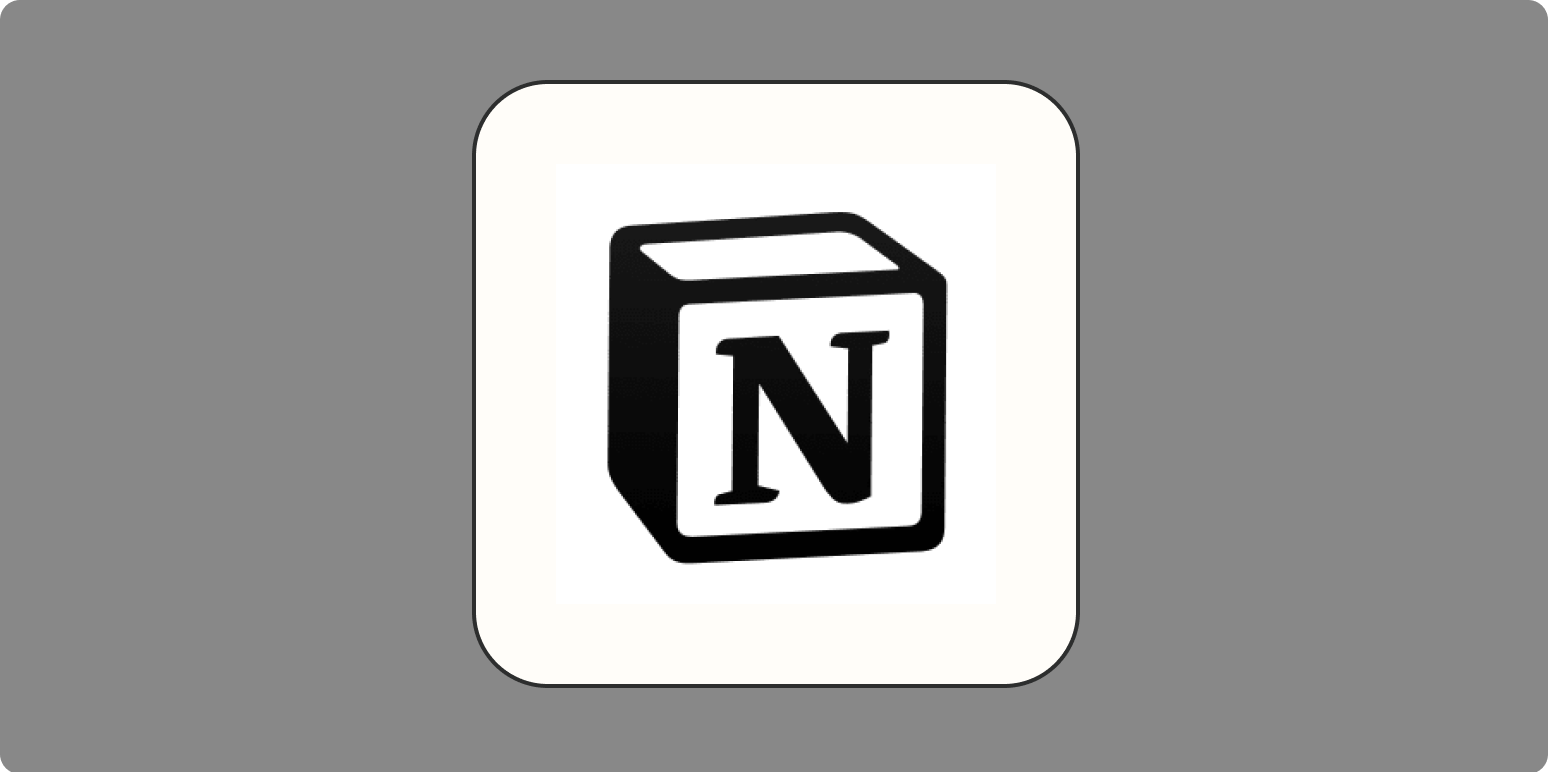I write everything down. Needless to say, it can be a bit chaotic. I used to use Evernote, but once I started using Notion for work and personal projects, I wanted to mimic the great features of Evernote in the app I used for everything else.
That’s when my Notion notebook was born.
This note-taking system does everything I loved Evernote for: I can create quick notes, add notes from my browser, access all my notebooks from the sidebar, and create action items from within notes. Here, I’ll share my Notion notes template—my personal Evernote alternative—so you can make it work for you.
Using Notion for note-taking
Notion is an incredible mix of freedom and organization. And I leaned into that mix when creating my Notion note-taking system. If I have a quick idea, I can jot it down on the scratchpad and organize it later. Or, if I decide a note belongs in another notebook, all I need to do is switch the labels. In the end, it helps me feel free to brain dump first and get organized later.
Open my Notion note-taking template, and follow along to see how it works.
The central database
My Notion notes system is based on one main database (titled “notebook-database”). Within that database, each note is categorized into a notebook using the dropdown in the Notebook property.

That gives me a set of notebooks that I can access using the navigation panel (each one is just a filtered view of that main database).
For example, I created a notebook called “Personal,” along with a corresponding label in the database’s Notebook property. The notebook contains a filtered view of the database, showing only unarchived notes labeled “Personal.”
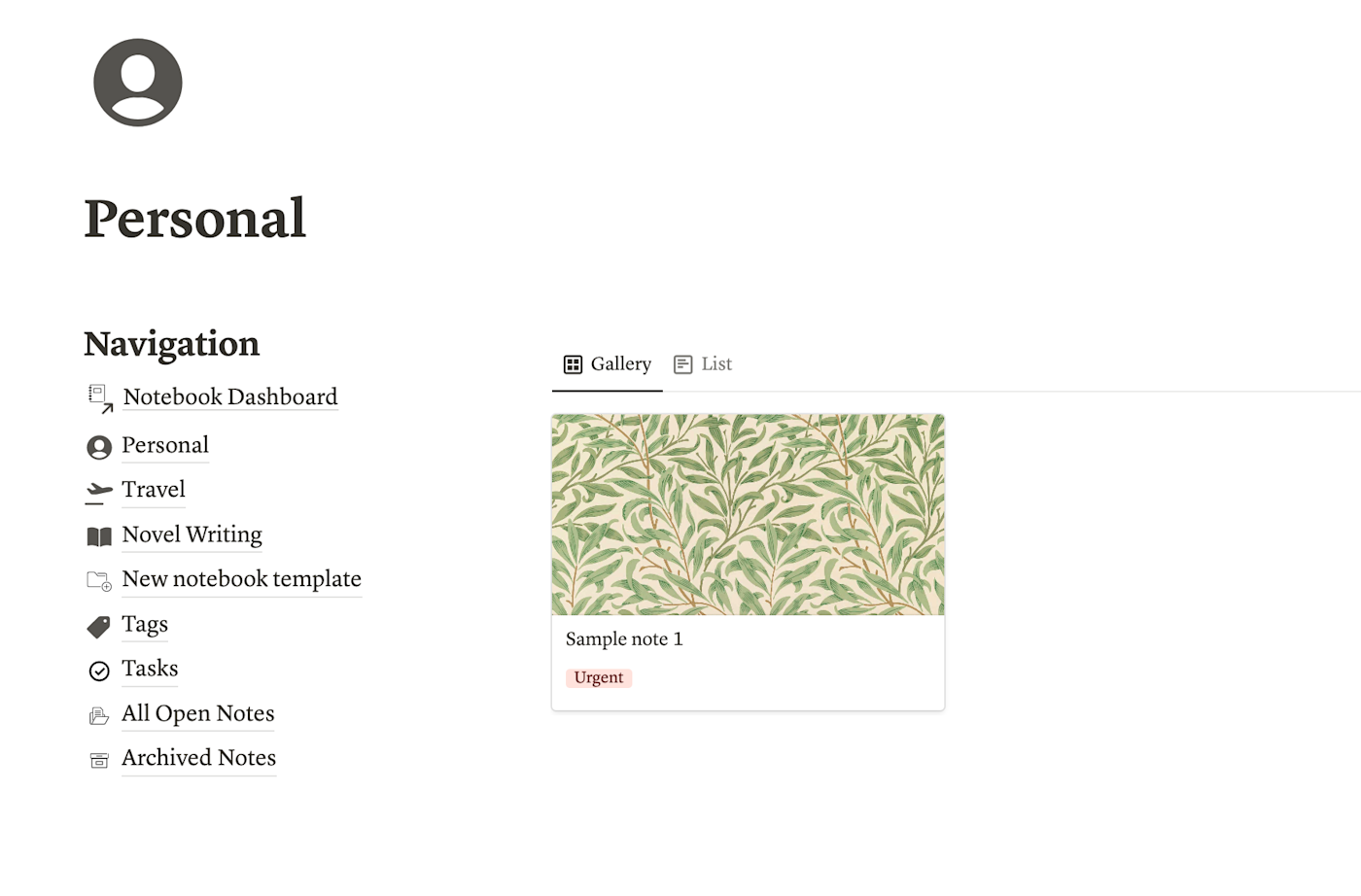
You can create as many notebooks as you want. Simply add a new label to the database property and create a corresponding page (more on that below).
I’ve made it so that each notebook can show notes in either Gallery or List view. I use Gallery because I like to add images to each of my notes, but if you’re a more straightforward note-taker, you can stick with List view for easier skimming.
The dashboard
The Notebook Dashboard is the central hub of my template. It displays a navigation panel on the left, where you can quickly access notebooks and other favorite views.
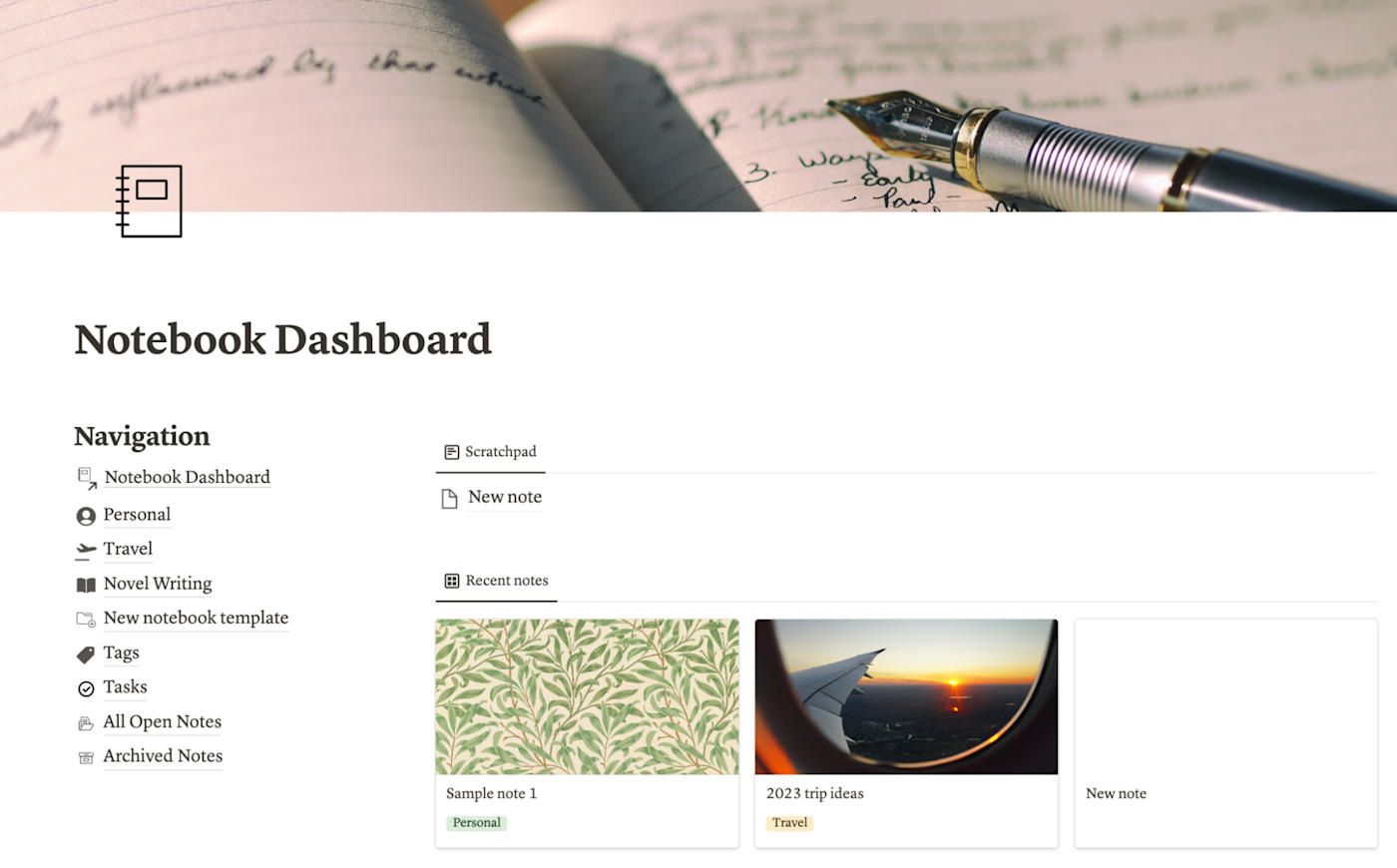
The star of the show, though, is the scratchpad, an inline view of uncategorized notes. I use this to jot down ideas quickly, and I deal with categorizing or archiving them later. I even have an iOS shortcut to get to it on my phone, so I can quickly add a note from my home screen with a tap.
Below the scratchpad is the Recent notes view, which shows you anything you’ve edited in the last week—making it easy to jump back into relevant notes.
Shortcut to create a new notebook
To create a new notebook, right-click New notebook template in the navigation panel, and select Duplicate.
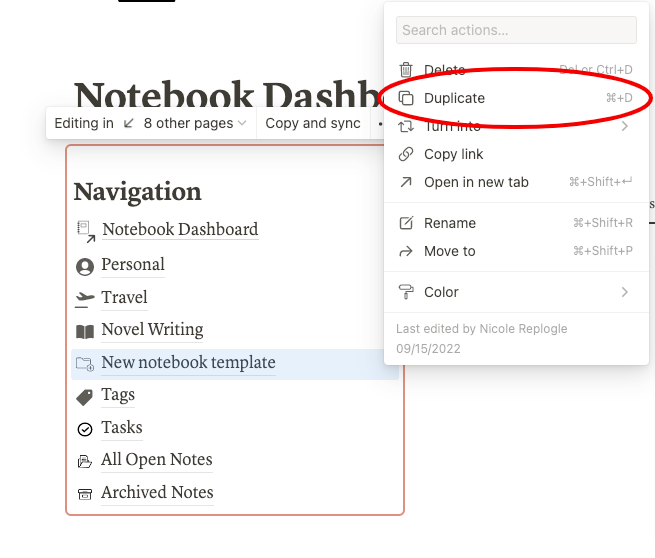
Once you click into your duplicated page, you’ll see the same layout as the other notebooks: a navigation panel and a filtered view of the main notebook database.
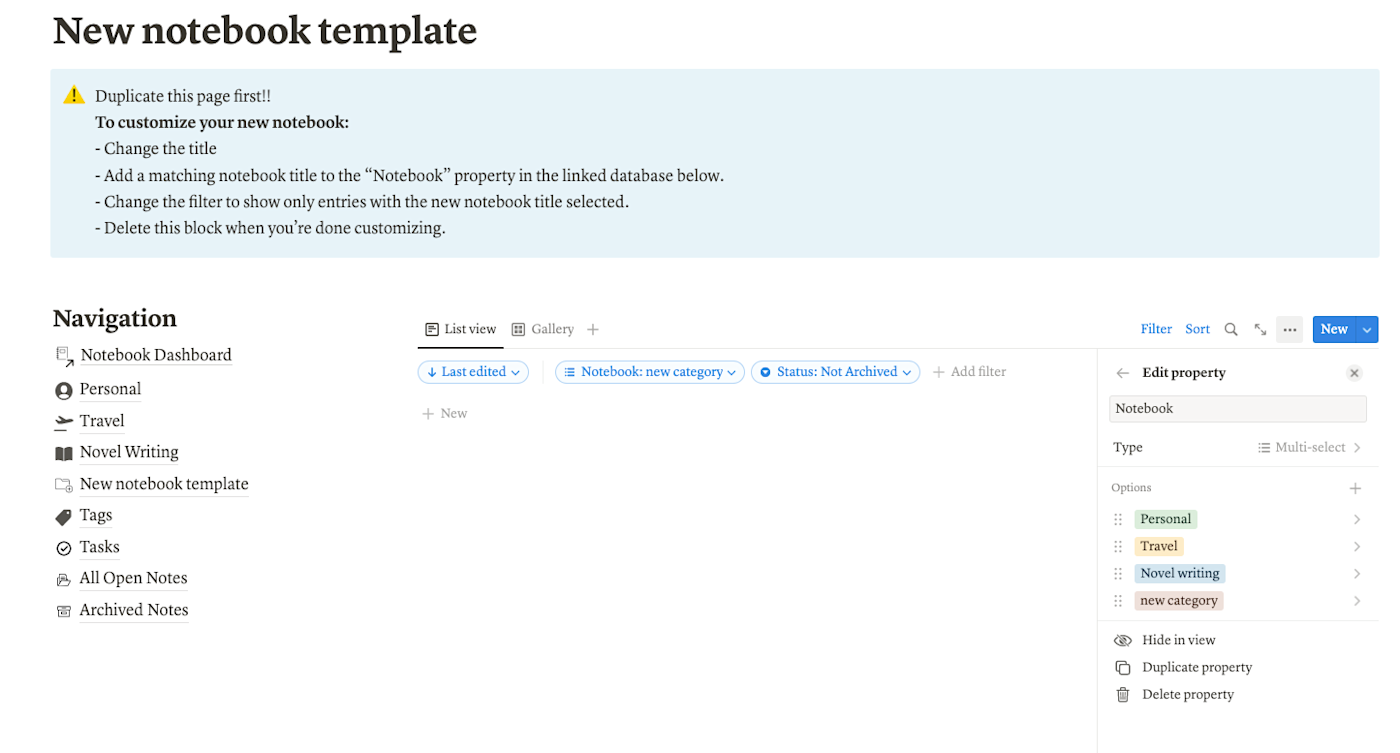
To customize your new notebook, change the title to whatever you’d like (for example, “Fitness” or “Lecture notes”). Then click the three dots in the upper-right corner of the linked database. Click Properties > Notebook, and then click the + icon to add a new Notebook label to match.
Next, click the filter dropdown that says Notebook: new category. Change the filter so that it only displays notes showing the category you just created.
Now, whenever you label a note with your new notebook’s title, it’ll appear here. You can create new notes from within this page, from the main dashboard, or you can reassign notes from other notebooks if needed.
Tags
Categories are great, but one more layer of organization ties it all together.
You can tag notes by whatever makes sense to you, like location, importance, or note type. For example, the “Important info” tag lets me quickly and easily find important notes across all of my notebooks. I could also create an “Urgent” tag (in red, naturally) to be sure I wasn’t missing any deadlines.
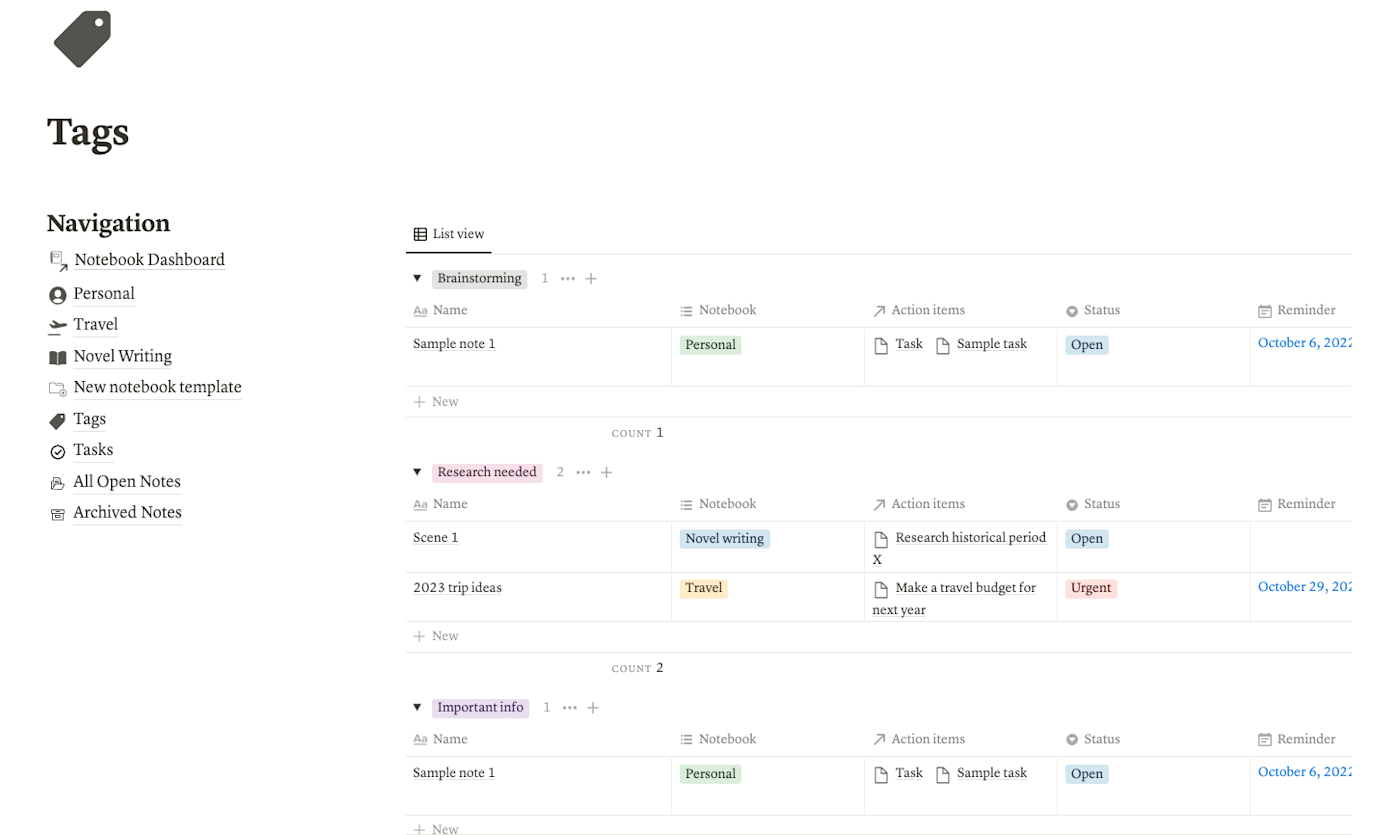
Get creative with your tags. Maybe you have an “Ego boost” tag for anything that’ll make you feel good about yourself looking back on it. Or an “Ideas” tag if you’re ever looking for business inspiration across categories.
Tasks
No notebook system would be complete without a way to create to-do lists.
Evernote has a great task management feature that lets you create tasks within notes without interrupting your flow, then view all of your upcoming to-dos in one place. I approximated this feature by creating a to-do list database (titled “notebook-action-items”) that’s linked to the notes database. That way, I can connect tasks to notes—or create and schedule tasks directly from within a new note (including setting reminders).
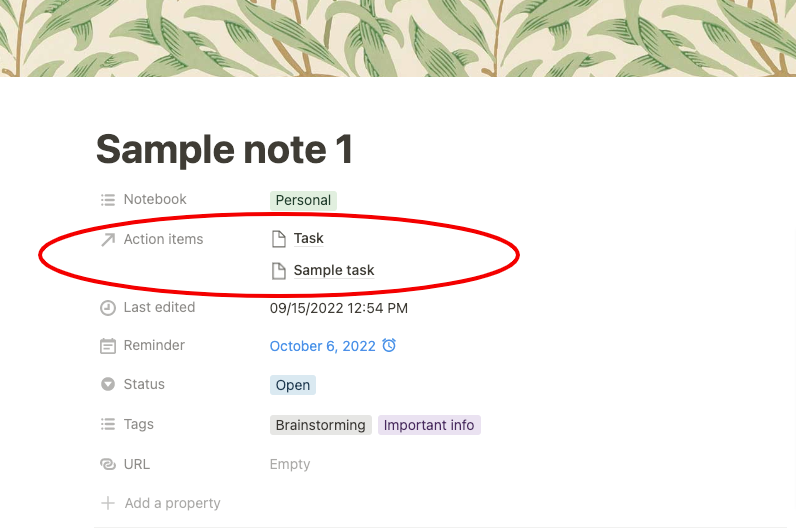
I should come clean: I don’t actually use this exact feature. If you use Notion for task management more generally (as I do), you need to be sure all your tasks are in one database, as opposed to having notes-based tasks in their own database. Take a look at my Notion to-do list template as a starting point.
Automate your Notion notes
The best systems always give you space to focus on what matters. When you automate your note-taking process, you’ll have more time to consume content and take action based on your notes.
For example, I use the Notion Web Clipper browser extension to add notes from my browser if I get an idea from a page I’m visiting. Just choose your notebook database from the dropdown, and it’ll appear in the Scratchpad view in your Notebook dashboard. You can categorize it or add context to it later, but it’s way quicker than a copy/paste.
If you use Notion for note-taking but another app for task management, Zapier makes it easy to create new tasks based on your Notion notes.
Or if you take notes during meetings, you can use Zapier to automatically create new notes for upcoming calendar events—you can even pre-populate them with event details and any other relevant information. Then all you need to do is open up the note when the event starts.
Zapier is a no-code automation tool that lets you connect your apps into automated workflows, so that every person and every business can move forward at growth speed. Learn more about how it works.
Customize your Notion notebook
The beauty of Notion is that it’s endlessly customizable. This template is just a jumping-off point for you to get creative and customize a note-taking system that fits your style. The more closely the notebook hub matches how your brain works, the more likely you’ll be to use it successfully and consistently.
For example, I like to sort each of my notebook pages by last edited time so that the most recently edited notes are at the top. But you might find it works better to sort by reminder date, tags, or even alphabetically.
Make it work for you.
Related reading:
[adsanity_group align=’alignnone’ num_ads=1 num_columns=1 group_ids=’15192′]
Need Any Technology Assistance? Call Pursho @ 0731-6725516

